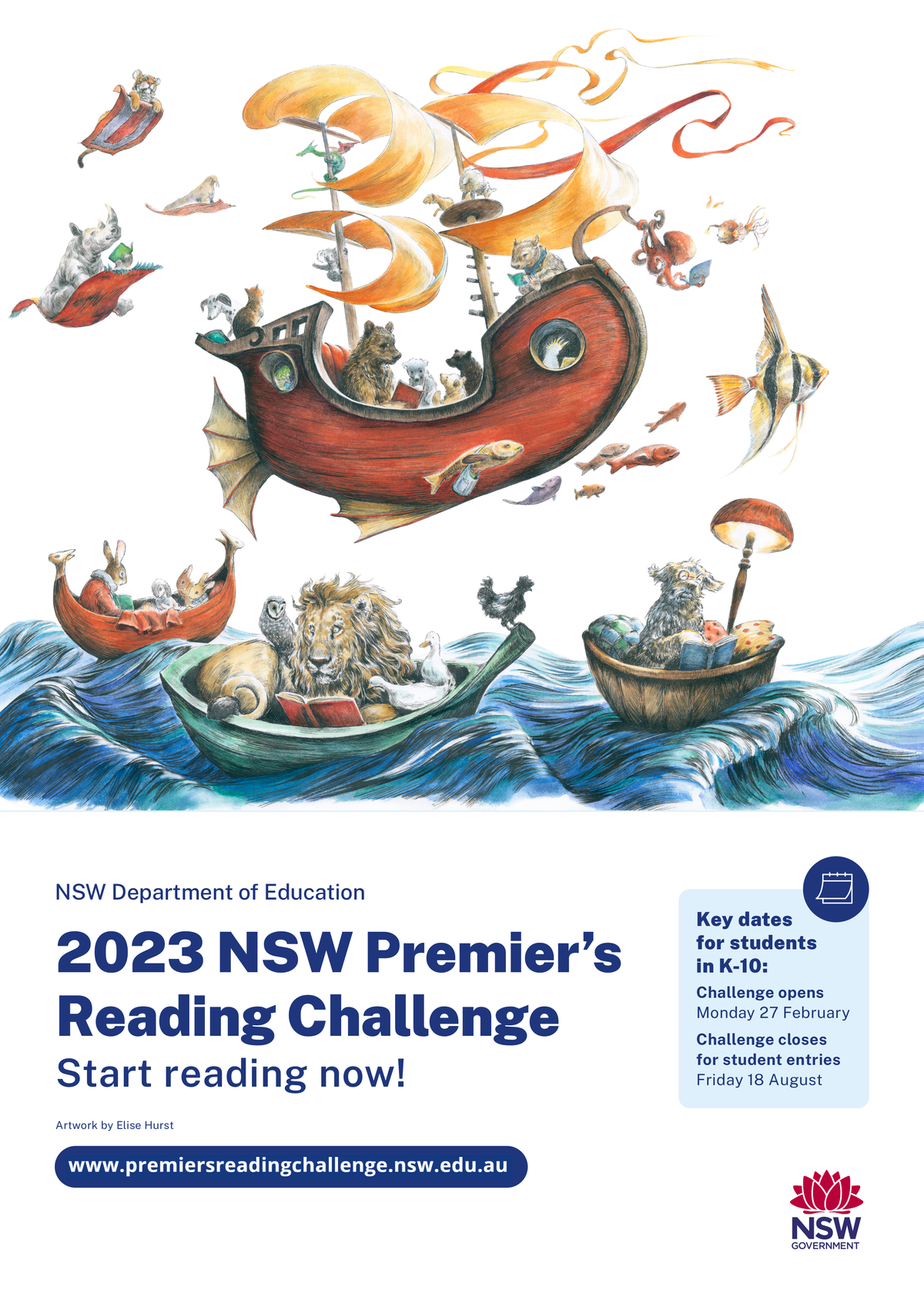A Look at Learning
Mrs Theresa Grills
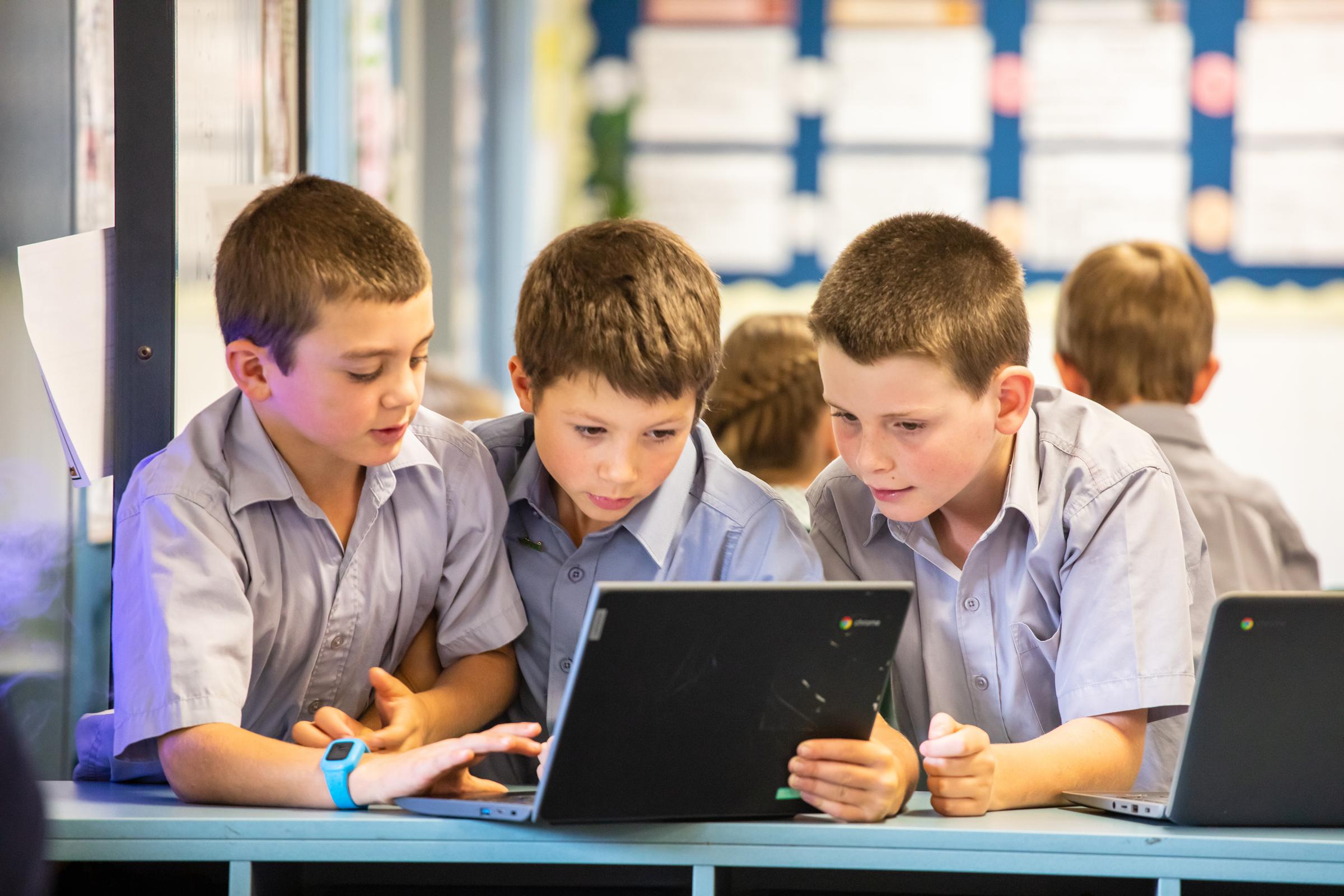
A Look at Learning
Mrs Theresa Grills
Scarlett, Callie, George, Benji & Ryan reading Premiers Reading Challenge books to the Year 1/2 class.

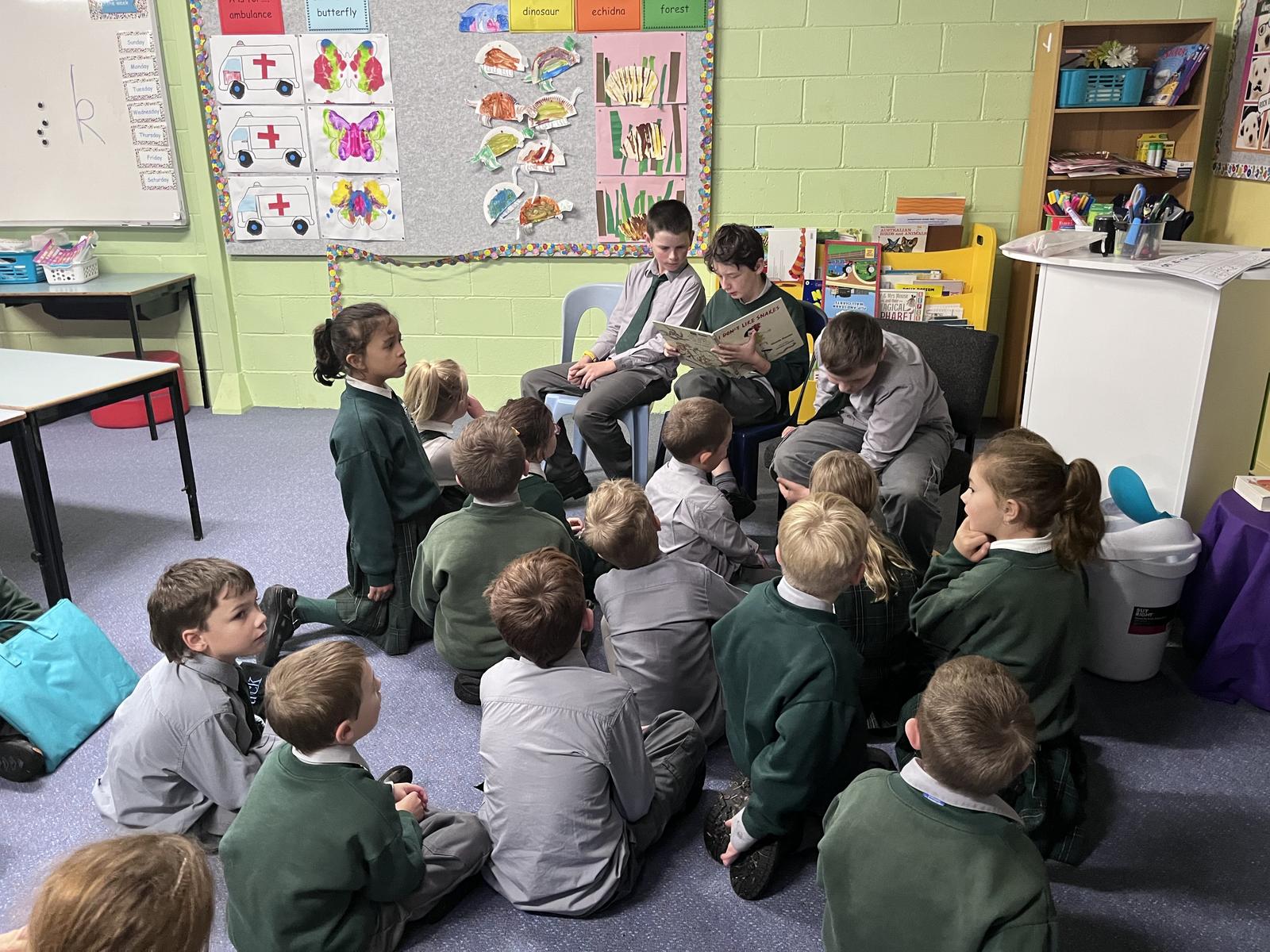
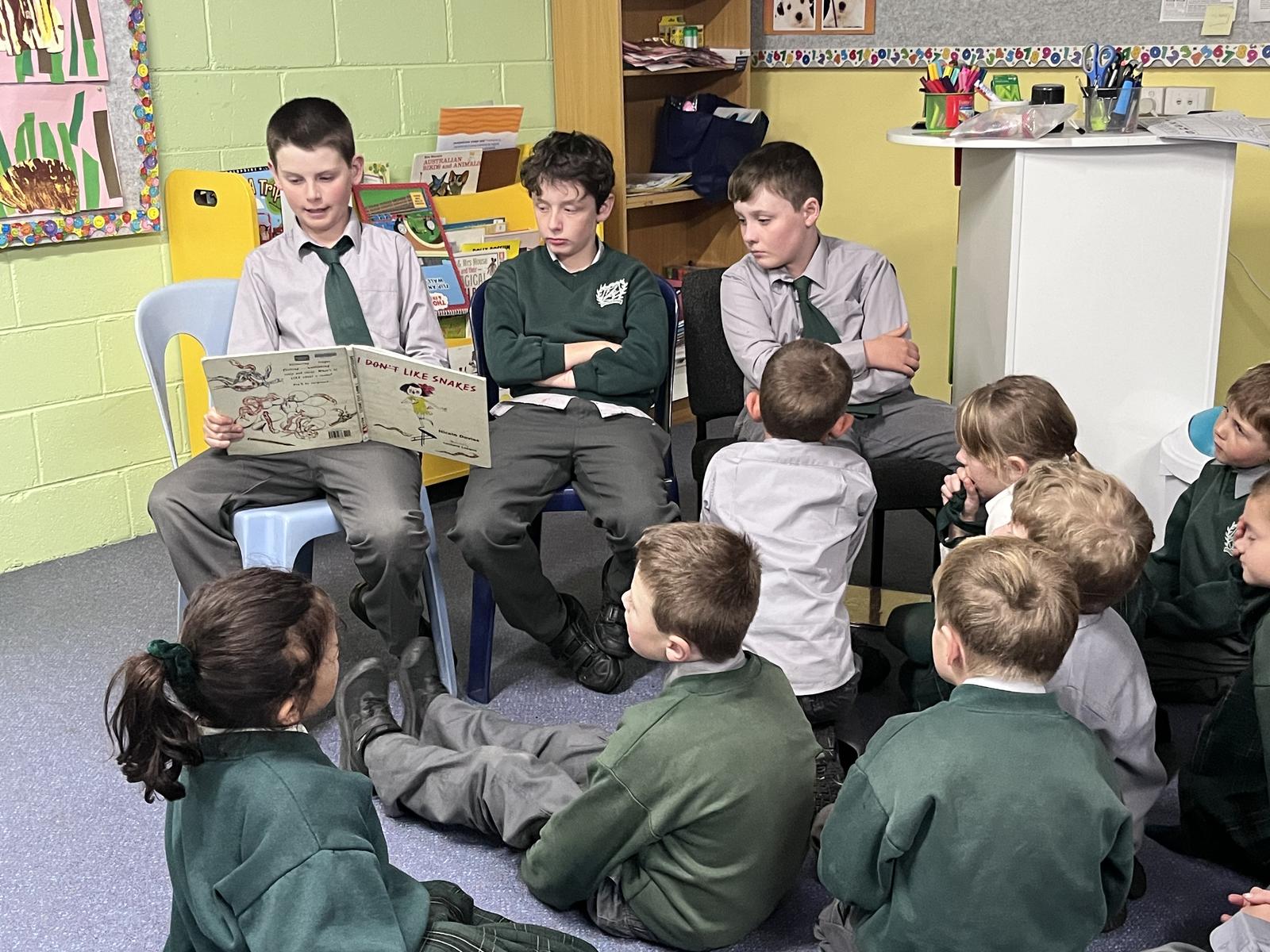
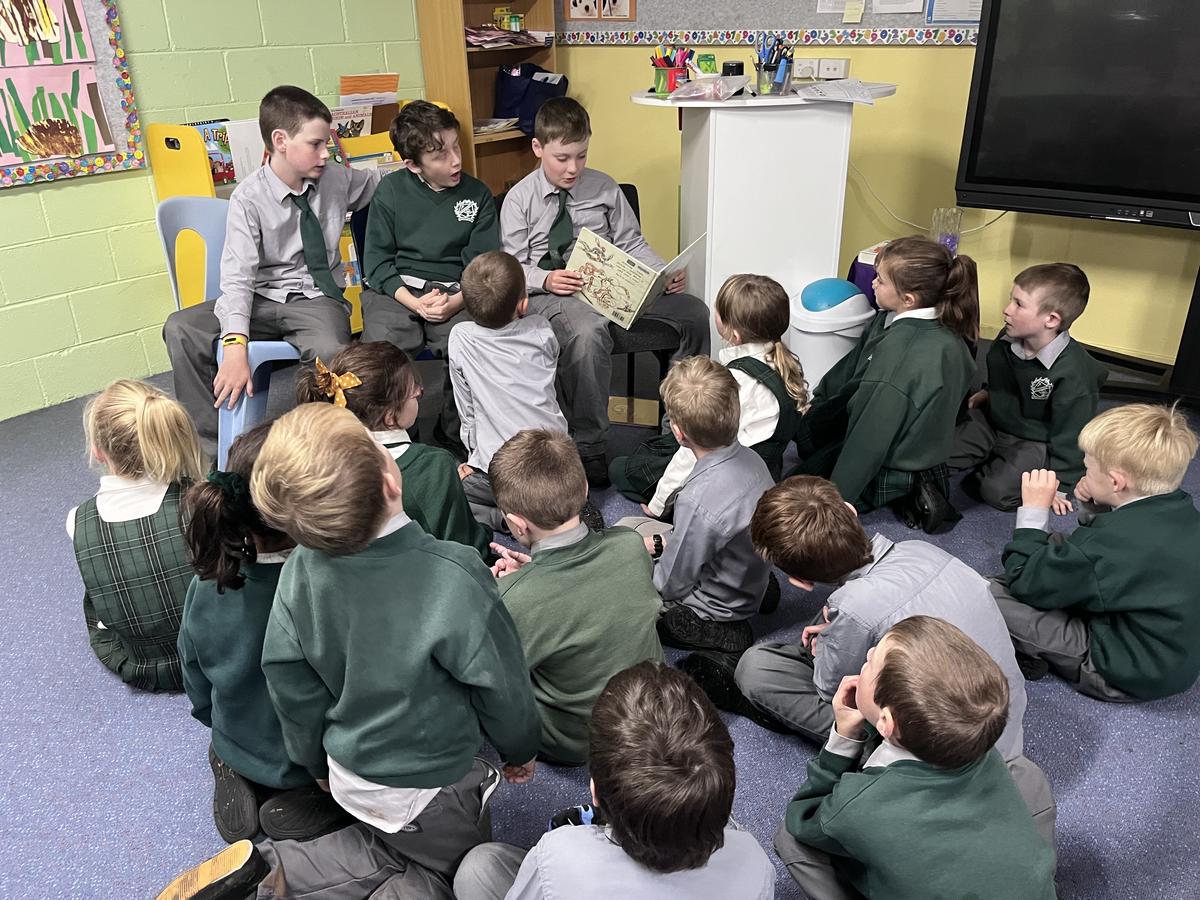






Tips for Kindergarten parents:
Go on a number hunt together and discover places where numbers are used such as:
- a clock
- television
- computer keyboard
- calendar
- telephones
- car licence plates
Counting the beats to your child’s favourite song and getting them to clap their hands or stamp their feet to the beat is a fun way to get your child counting.
Counting with your child at home
- Count with your child the number of buttons as you do up a cardigan or shirt.
- Encourage your child to count the number of pegs used to hang out the washing.
- Count the number of steps from the front door to the letterbox.
- Count the number of eggs in a carton, and again after some have been removed.
- Count the number of times you and your child can throw a ball to each other without dropping it.
- Read and talk about stories and rhymes that use numbers.
- Sing songs and nursery rhymes that include numbers such as Five Little Ducks and Baa Baa Black Sheep.
- Have your child count as far as they are able to go and then encourage them to join you while you continue counting.
- Show and teach your children how to recognise numbers in the community, e.g. road signs, prices at the shop etc. Kindergarten students need to recognise all numbers up to 20 but need to be able to count up to 30.
- Help your children to learn the teen numbers especially 11, 12 & 13. Guide them to distinguish the difference in the names of numbers e.g. nineteen vs ninety.
- Present the numbers in words for your children so they can recognise these words in Mathematics. e.g. one, two, three etc.
Tips for Year 1/2 parents:
Combining and separating quantities (Addition & Subtraction)
Combining and separating quantities focuses on:
§ using addition and subtraction to solve problems.
You can help your Year 1 and Year 2 child at home by:
§ practising quick recall of double numbers to 10. Use double domino tiles to extend thinking to doubling numbers to 20
§ finding and discussing numbers in everyday life that are not meant to be used with place value, such as phone numbers, pin numbers, bus numbers and postcodes
§ using number bonds, or ‘friends of 10’, to assist with simple addition and subtraction problems. For example, 4 + 6 = 10, 6 + 4 = 10, 10 - 4 = 6, 10 - 6 = 4
How To Teach Number Bonds? | Maths – No Problem!
§ using number bonds to solve addition problems by making groups of 10. For example, the problem of 26 + 8 can be solved by taking 4 from the 8 and adding it to the 26. The new problem of 30 + 4 is much easier to solve
§ solving problems using their knowledge of doubles. For example, the problem 8 + 9 can been seen as double 8 (8 + 8) which is 16. Add one more to make 17
§ building number bond knowledge to understand ‘friends of 20’. These number pairs are 11 and 9, 12 and 8, 13 and 7, 14 and 6, 15 and 5.
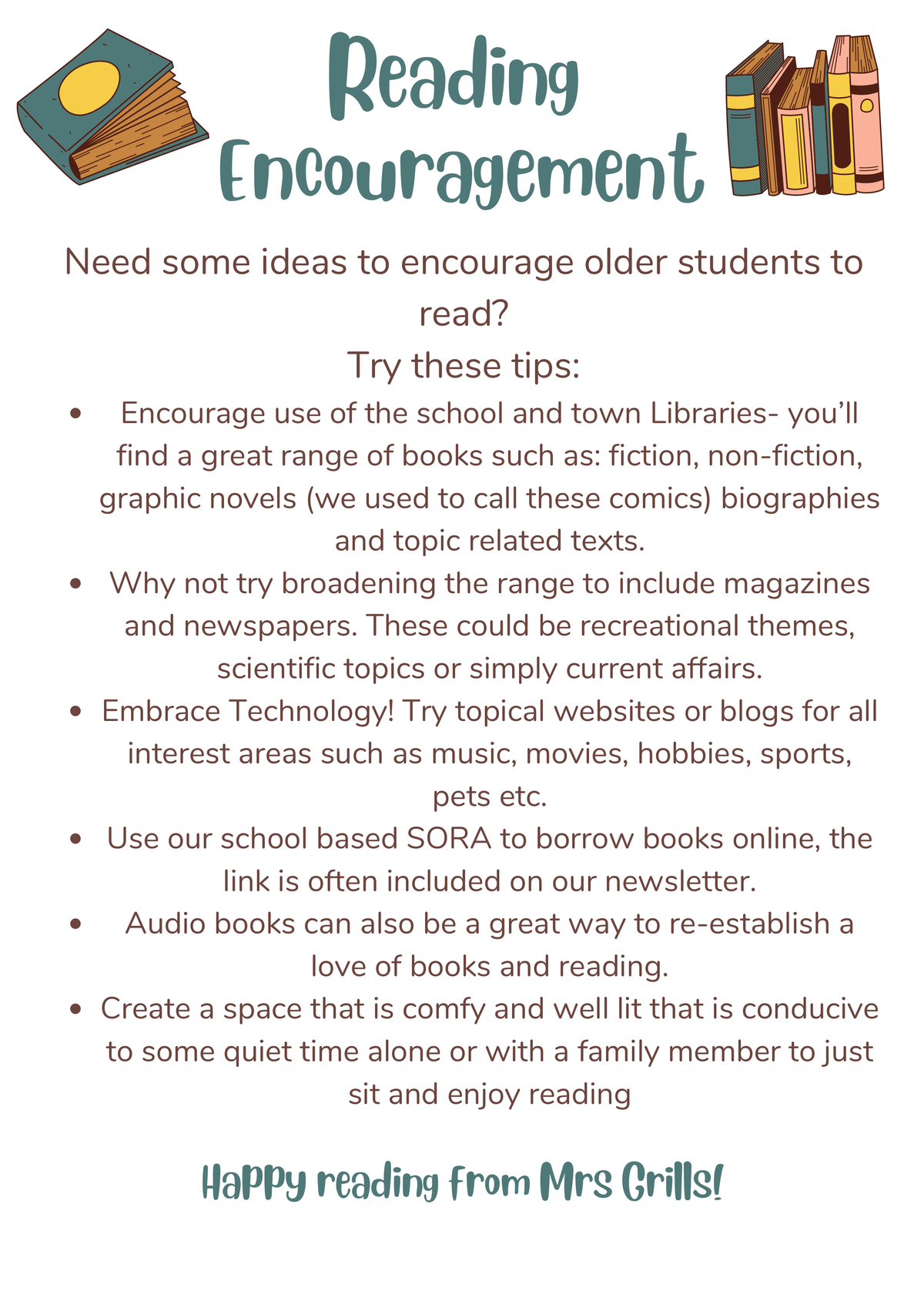

As we commence a new year, please remember that all students have access to SORA, our digital library platform. Simply access your app store and download SORA. Once in the app you will need to add our Library by searching for:
or select
YOUR SETUP CODE IS: CENETAU
You will be prompted to:
Username: is your school email address
Password: is the same password that you use to log into your Chromebooks every day at school!
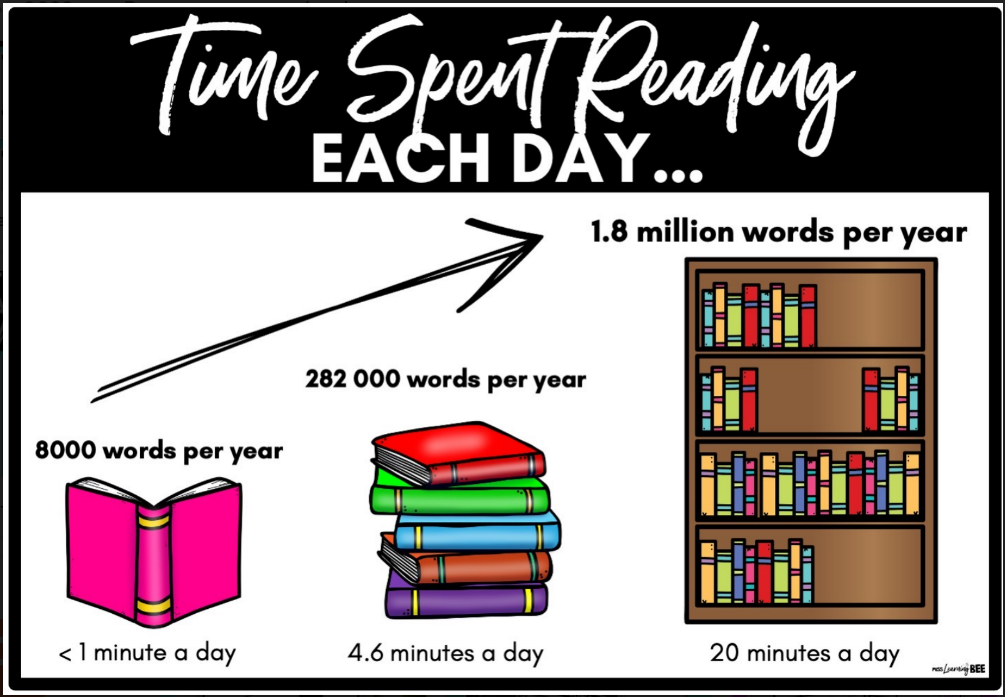

Each Year our students are given the opportunity to take part in the NSW Premier’s Reading Challenge. The 2023 challenge is now open until Friday 18th August, and is used to encourage students to foster a love of reading.
The Premiers reading challenge allows students to register their books read from a set booklist online. If they read a set number of books, they receive a certificate from the NSW Premier. After four years of participation in this event the student will receive a gold certificate. The children who participate are also listed on an online honour roll each year and some names are published in the Sydney morning herald.
In order for this to happen and for your child to receive their certificate, consent needs to be provided the event in compass. Information regarding the NSW Premiers Reading Challenge and book lists can be found on the NSW Education website or by contacting Karen Faint at the school. Participants will be provided with their own personal PRC login and password - please note this will be the same as last year's login details.
For more information please visit:
www.premiersreadingchallenge.nsw.edu.au
